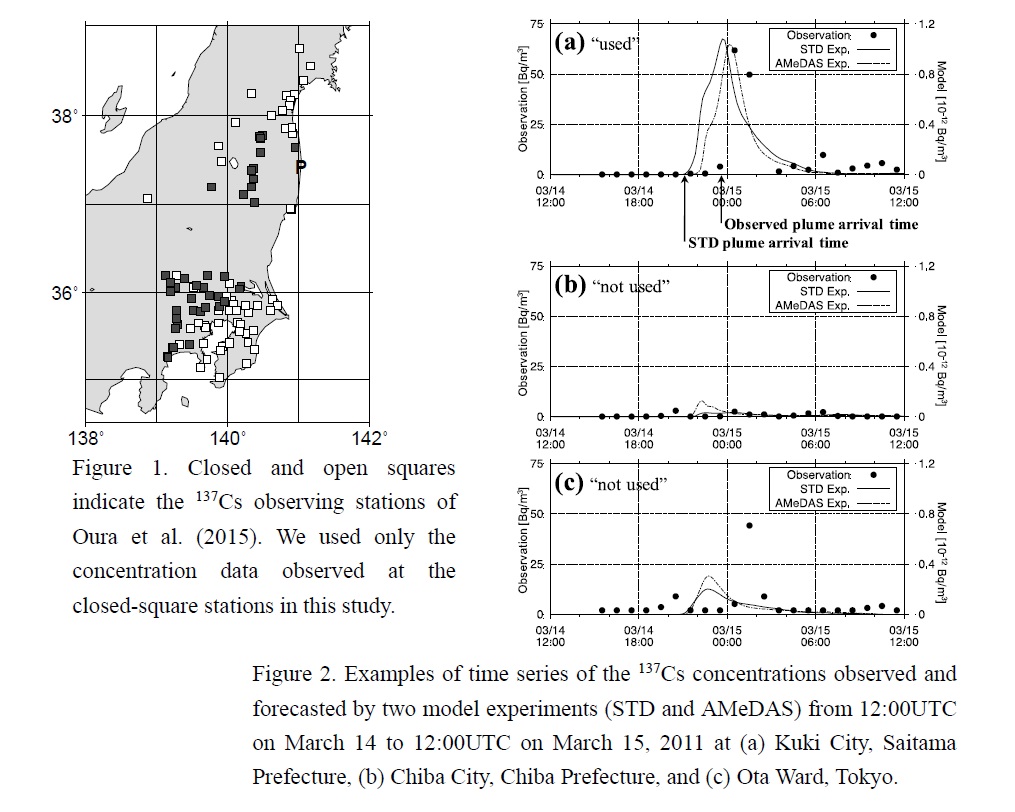Graphical Abstract
Sekiyama, T. T., M. Kajino, and M. Kunii, 2017: The impact of surface wind data assimilation on the predictability of near-surface plume advection in the case of the Fukushima nuclear accident. J. Meteor. Soc. Japan, 95, 447-454.
https://doi.org/10.2151/jmsj.2017-025
Graphical Abstract with highlights
Highlights:
- We investigated the predictability of plume advection in the lower troposphere and the impact of AMeDAS surface wind data assimilation using the Japan Meteorological Agency non-hydrostatic weather prediction model and local ensemble transform Kalman filter (JMANHM-LETKF) data assimilation system with a 3-km horizontal resolution.
- The predicted radioactive cesium concentrations were examined for plume arrival times at 40 locations in the Tohoku and Kanto regions (Fig. 1) observed in March 2011.
- The mean error of the AMeDAS experiment (assimilating both the standard dataset and AMeDAS surface wind observations) was 72.8 minutes for plume arrival times, which was 9.2 minutes (11 %) better than that of the standard experiment (assimilating only the standard dataset) with a 13-hour lead-time on average.







